The Article
Hugo 2 DAC From Chord: A Man of Moods And Not Enough Parts
6th December 2017
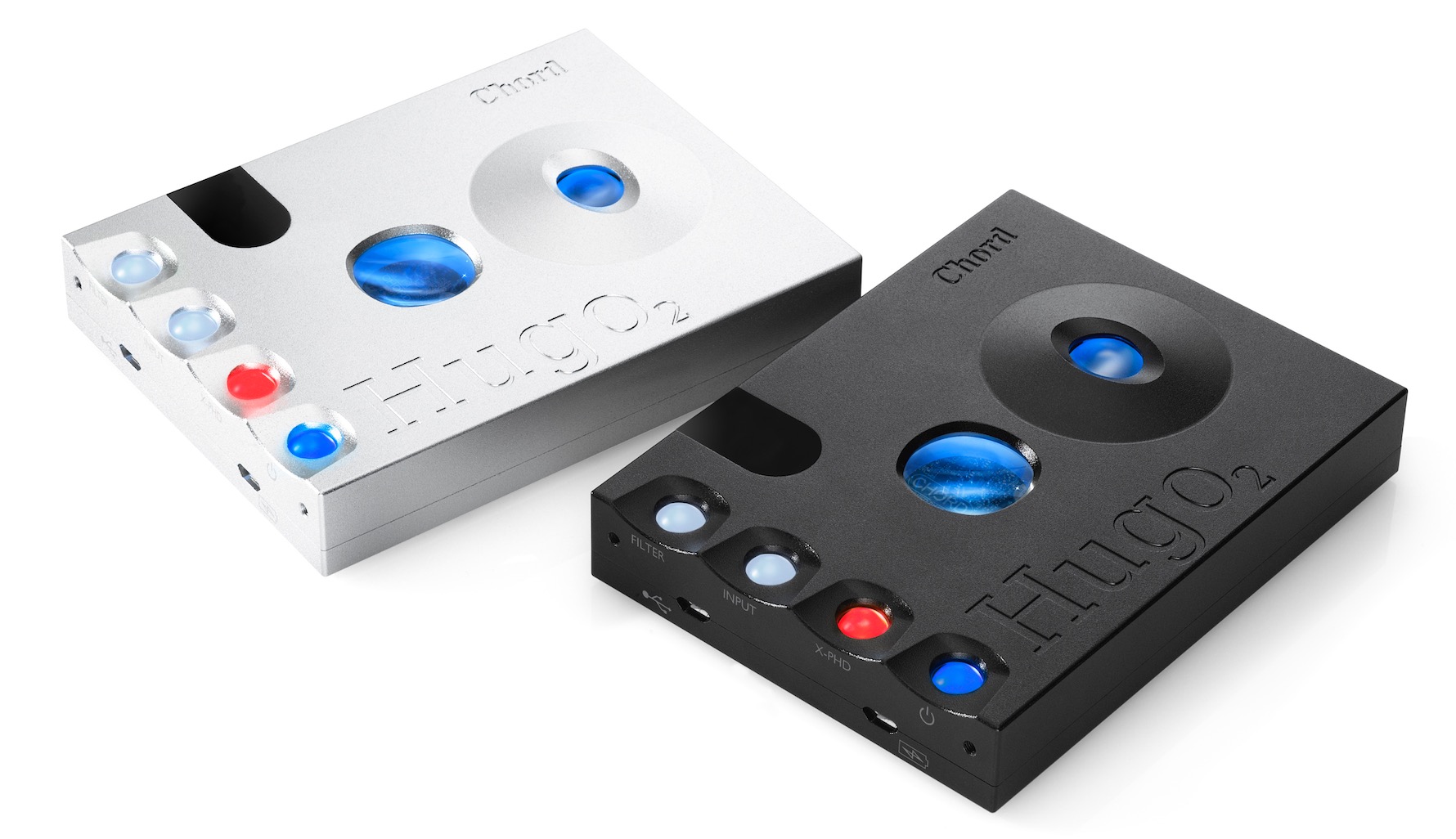
Looking for a ‘do it all’ DAC/headphone amplifier at a reasonable price and, while we’re about it, size? Paul Rigby looks at – and struggles with – a prime candidate in Chord Electronics’ Hugo 2
I wanted to grab it for review because I’ve been a fan of the company’s Mojo for a while and have, since then, looked at several DACs and headphone amps from other companies that have provided huge competition. Does the Hugo 2 go one step further or does it struggle to keep up?
What you notice when the aluminium unit (packed with a colour changing polycarbonate button interface) emerges from its sturdy box is the size. Compact but much larger than the sister Mojo headphone amp, the Hugo 2 does add a host of connections. This means that you can access optical, coax plus USB ports. If you’re looking at wireless connections then you are supplied with aptX (supplying up to 16bit/48kHz streaming). You won’t find analogue inputs and balanced is right out, though.
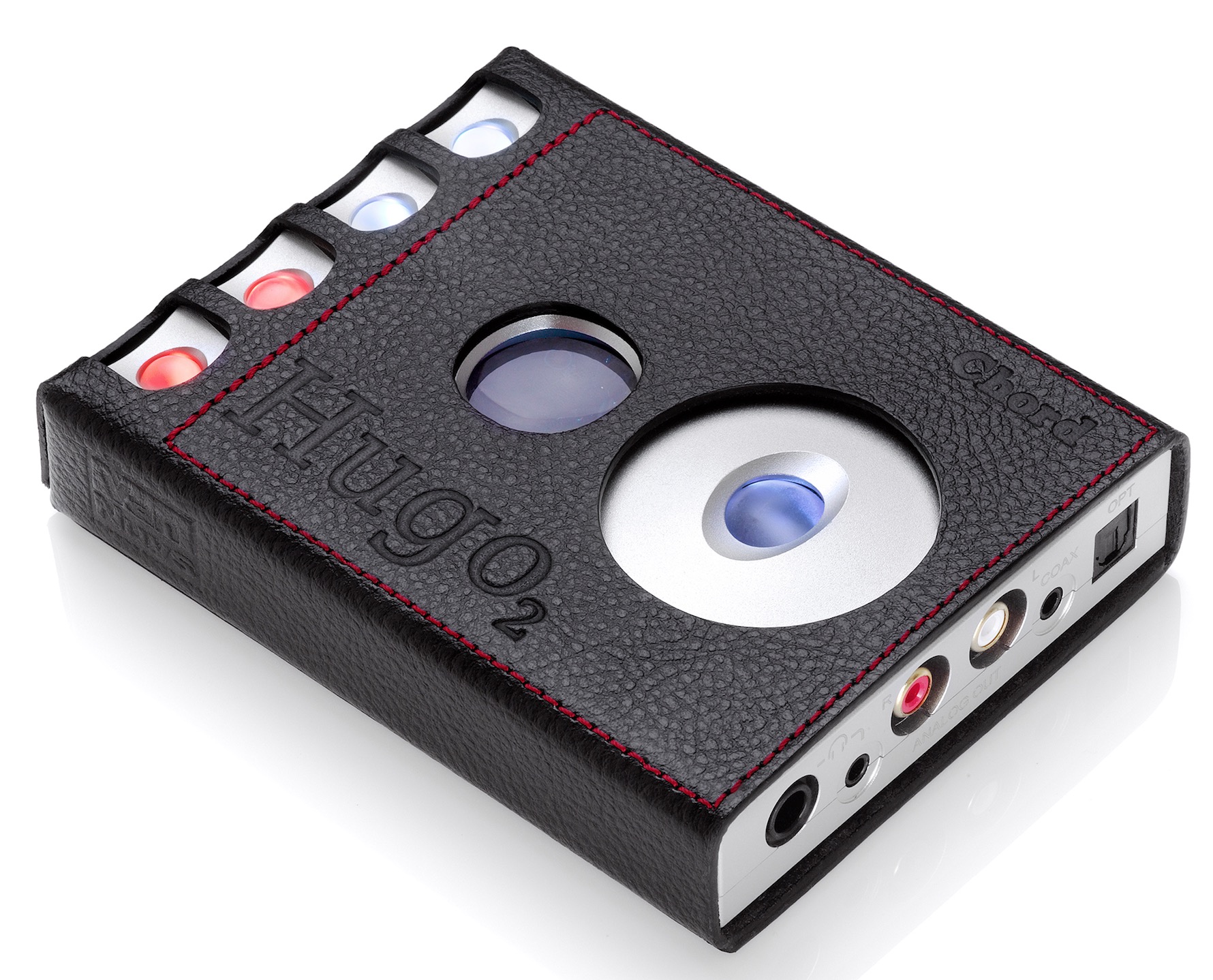
What you do get, in addition to the 3.5mm headphone socket, is a full size 6.3mm headphone socket. This is not just a good idea but it’s a great idea. Partly because headphones, even larger models, can arrived in either termination type. The main reason for my smiles, though, is that you don’t have to resort to a convertor plug if your headphones are not of the correct size. Believe it or not, when you add a convertor plug, you reduce sound quality. I’ve done extensive A-B tests in this area and can confirm the differences.
You also receive a pair of analogue outputs which means that the Hugo can be operated as a digital pre-amp. Useful.
Based upon a custom coded Xilinx Artix 7 (XC7A15T) FPGA, the Class A chip supports 32bit/784kHz or DSD 512 (or Octa DSD to you, sunshine) sound support through one of the USB and coax ports plus 24bit/192kHz through the optical. The Enix Energies 3.7v 9.6Wh Li-ion batteries provide two charge modes, fast (offering four hours of play) and slow (offering seven to eight hours of play).
There’s a four-function switch filter offering sound EQ settings (although I preferred the default, I have to say now) and a digital cross-feed function from the original Hugo offering three operation modes. The system is there to reportedly duplicate the effect of listening to speakers and is based on binaural audio research.
Spanning 130 x 100 x 21mm and weighing 450g, available in natural silver or satin black, the unit powers down after 10 minutes of non-use. You’ll need a Windows driver to run it on a PC but nothing at all when used with a Mac.
In the box, apart from the Hugo 2, you’ll find a charger, 1.5mm micro-USB cable, micro-USB to micro-USB OTG cable and manual.
Larger than pocket size, the Hugo 2 arrives with a remote control which suggests that this product is a small footprint shelf unit rather than something to be used ‘on the go’. There’s nothing stopping you doing that, if you’re determined.
IN USE
Professionally built and superbly finished, the Hugo 2 will be familiar in use for any Chord fan out there. Beginners may take a little time to get used to the colour coded messages that the Hugo 2 gives you in terms of volume, output and the like. Continuous use will provide familiarisation but the initial experience might be slightly bemusing. That said, the remote will seem like a god-send to traditional hi-fi users as it features standard interface commands.
I do have to add, though, that Chord is confusing the user here, effectively forcing the user to ‘learn’ two completely different ways of operating the product. Surely the company should commit to one or the other? Either the coloured marbles interface (chassis) or the traditional approach (remote).
I did ask Chord about this and it very kindly got back to me on that point, “This goes back to the design brief, being a transportable product plus Hugo 2 has a huge number of desktop users hooking into laptop and desktop computers. The remote control has been added over the original to support those folks using it in lay-back environments.” With a follow-up that said, “I think the expectation is that the vast majority of users will use Hugo 2 up close and will, therefore, appreciate the colour coding. The remote is simply an added bonus for the minority who use Hugo 2 in a rack and conventional system.”
None of which explains why the confused interface choices exist in the first place and why a remote wasn’t developed with the same colour coding to provide a smooth transition from the chassis to the remote (or, of course, vice versa). As it is, the change from chassis to remote and back again is wholly jarring. You feel that the remote doesn’t really belong in this package. That it’s been borrowed from somewhere else.
What really did frustrate me, though was that only certain RCA cables could be attached to the Hugo 2 because the chassis holes were frankly too small to allow me to use my reference Tellurium or Atlas RCA cables with, from my perspective, termination plugs that were fairly average in size for audiophile products. I had to use a smaller than normal termination attached to a lower grade Atlas cable instead. Not being able to use the cables I wanted impinged on my freedom – which was grating. Put it this way, my reference Benchmark rated at the same price doesn’t force me into a similar cul-de-sac.
Chord’s comment to this was, “These have been improved over the previous model but the issue was some of the thicker interconnects on the market can be so stiff and inflexible that they can lift the device off its surface putting lots of strain on the (soldered) USB socket.”
Chord is assuming that a cable with a slightly larger termination will cause that damage – which is not necessarily so. Also, why not add strength and reinforcement to the internals then? After all, this is not a £200 product, it costs £1,800! Is Chord stating that it’s £1,800 unit will effectively be damaged by a cable which, in hi-fi terms, is no more than average in terms of cable thickness?
Similarly, the USB cable – for the very high resolution files on offer – was restricted to a mini-USB connection only. Not offering a full sized USB socket hampered my choice of third party cables (once more) which, again, limited the possible sound quality potential. Chord can include two sizes of headphone socket but only one USB port size?
Again, I thank Chord for responding to my criticism. It said, “Hugo 2 was designed as a transportable unit as the 2Qute serves as the static small DAC in the range. With portability in mind, micro USB is the logical choice and although it might look like there’s room on the casework, the board could not fit both.”
So, give me a larger board then. Not a massive increase in size. Just slightly larger to hold a full sized USB plug. I repeat, the board provides for two – not the usual one…two – headphone sockets including a full sized socket. But not a full sized USB?
The issue here is that hardware is being prioritised over and above user requirements. Instead of asking, “What would a user require in this situation?” and then building to those requirements, Chord appears to have chosen a board first and then done its best given the hardware supplied. The user appears to have been second on the list of importance. As I said to Chord itself during our exchange, it’s a bit like saying, “Yes, the car would work better with four wheels but the chassis can only hold one and so, we’re restricted by the chassis size.” So, you’re given a one-wheeled car and the company is confused why you’re complaining.
If this unit was a real, true and honest-to-goodness mobile product then none of the above would matter but, due to its slightly awkward size and the remote control (which is also very large for any purported mobile product) as well as the RCA output, the Hugo appears to want to be a small footprint static hi-fi addition (portable or not, it’s static in operation). The design does feel a little schizophrenic, though. Being neither one thing or the other. Which causes frustration and again brings into question the relatively high price point.
I hate to say this but I have to ask, if these features were corrected then would sales of the £3,200-priced Hugo TT (positioned just above the Hugo 2) be threatened? I think so. And if the Hugo 2 were transformed into a genuine mobile product with the inevitable lowering in price then it would worry the Mojo (which is positioned on the next rung down from the Hugo 2). There does seem to be a measure of ‘range protectionism’ going on. The Hugo 2 sits in a difficult slot in the Chord range and appears to be intentionally shoe-horned.
Another additional layer of frustration was the requirement to add a pairing code when connecting to Bluetooth. That is, you can’t just pair and be done with it, as you do with most Bluetooth devices. You have to pair, with the Hugo 2 and then input a pair code of ‘0000’ and then the Hugo pairs. It’s an unnecessary and a silly delay. I’ve paired hundreds of Bluetooth products and never had to do this.
Chord’s response to this criticism was, “You need a pairing code to ensure that you BT couple to the correct source, otherwise you could connect to any mobile that was in the same room,” and “The BT protocol just reflects the way the device was engineered to work.”
I’ve used dozens of Bluetooth capable products that connect directly and to the right mobile every time. Even cheap and nasty stuff. I’m not sure about you but I pair one at a time anyway. That is, you press ‘pair’ or just switch on a product, then you look for it in the phone settings, confirm the pairing or not and away you go.
The bottom line to the above? I’m still not sure why you need a code.
SOUND QUALITY
Enough of the hardware struggles. Onto the sound tests. I started with my iPhone 8 and sent Marvin Gaye’s Mercy Mercy Me over Bluetooth to the Hugo 2.
Because MP3 is inherently crippled as a music format, top quality components can almost play it too accurately. You really don’t want that. Hence a more sympathetic playback can be welcome, otherwise your MP3 collection can become unlistenable overnight. The Hugo 2 does well here, giving the midrange a softening effect. Yes there were some uncomfortable midrange edges and clinical response issues here but the spacious soundstage provided a relatively rich and mature playback.
I then used my Red Wine-modded Astell&Kern AK120 DAP and connected to the Hugo 2 via optical cable, playing Dire Straits’ Money for Nothing at 24bit/88.2kHz.
What attracted me to the Hugo 2 immediately was the wide open nature of the sound presentation. That is, the soundstage was, frankly, enormous. The amount of space available for the band to use meant that each instrument had a lot space to perform in. This meant that previously shy sounds such as the bass guitar, the background synth and the normally rather pinched treble sounds of the tambourine were all ‘visible’ to the ear. It also meant that the drums could really stretch out and relax. This also meant that the lower frequency bass notes were very informative and, in relative terms, much more coherent than you would normally expect at the price point.
Keeping the configuration, I then turned to Bob Marley’s I Shot The Sheriff at 24bit/96kHz. Noticeable was that the almost dub-like bass on this track was tight, tidy and without any sense of blooming to invade other, adjacent, frequencies. Because of this, the bass receded into the mix and sat alongside the midrange in a well behaved, yet still powerful manner. This meant the the rhythm guitar and organ were equally prominent. Weaker DACs allow the bass to almost mask these midrange essentials yet the Hugo 2 was supremely balanced on this score.
I then brought in the headphone amplifier, listening to the same track. The control and incisive nature of the sound was not up to the same standard via the built-in headphone amp. There was a not the same level of lower end control or coherence in the upper mids. That said, the soundstage remained beautifully open while the airy nature of the same allowed a host of detail to reach the ear while instrumental separation gave the sound an attractive and engaging feel.
Moving to the DAC again, I played Eric Bibb’s blues track, Meeting At The Building at DSD 256 via the USB port. This song is packed with activity. A host of organic instrument plus gospel-esque vocals threaten to overwhelm the soundstage. The Hugo 2 dealt with this sonic melange with flying colours, providing an ordered and spacious soundstage in which the heap of activity within progressed with both calm and a sense of satisfaction. There was no bumping or falling over each other, the guitars were superbly characterful and tonally accurate while the vocals were placed in a layered fashion to the rear of the soundstage and percussion was organic and rich in flavour with secondary percussion of the wooden blocks and cowbell types were satisfyingly clean and open in nature. The entire presentation was bountiful in detail with a transparency that was wholly involving.
CONCLUSION
There is a measure of confusion in terms of design for the Hugo 2: is it a mobile device or is it a static hi-fi device? Both options raise issues, when looked at closely and stem from a feeling that the chassis and interface design is unfinished or, at best, squeezed into an impossible position as it is shoe-horned into a crowded product range.
Nevertheless, the most important aspect of this design is the sound quality. The headphone amplifier output is very good but the DAC is simply terrific. In fact, if I could, I’d give this product two ratings. I would give Rob Watts – the designer of the DAC – ‘9’ for a brilliant sound output and I would award the rest of the company ‘6’ for letting Rob Watts down by wrapping his DAC with a confused and irritating chassis/interface.
Even so, the Hugo 2 provides supreme sound quality that threatens DACs many times its price point with a capable headphone amplifier to boot.
CHORD HUGO 2 DAC/HEADPHONE AMPLIFIER
Price: £1,800
Tel: 01622 721444
GOOD: spacious soundstage, transparent mids, insightful bass, feature count
BAD: interface learning curve, schizo design implementation, price
RATING: 7
REFERENCE SYSTEM USED
iPhone 8
Benchmark DAC2 HGC
Astell & Kern AK120 (Red Wine modded)
Aesthetix Calypso pre-amp
Icon Audio MB 845 Mk.II monoblocks
Icon Audio HP8 Mk.II [Update] headphone amplifier
Quad ESL-57 speakers with One Thing mods
Sennhesier HD800 headphones
Blue Horizon Professional Rack System
Vertex AQ, Atlas & Tellurium Q cables

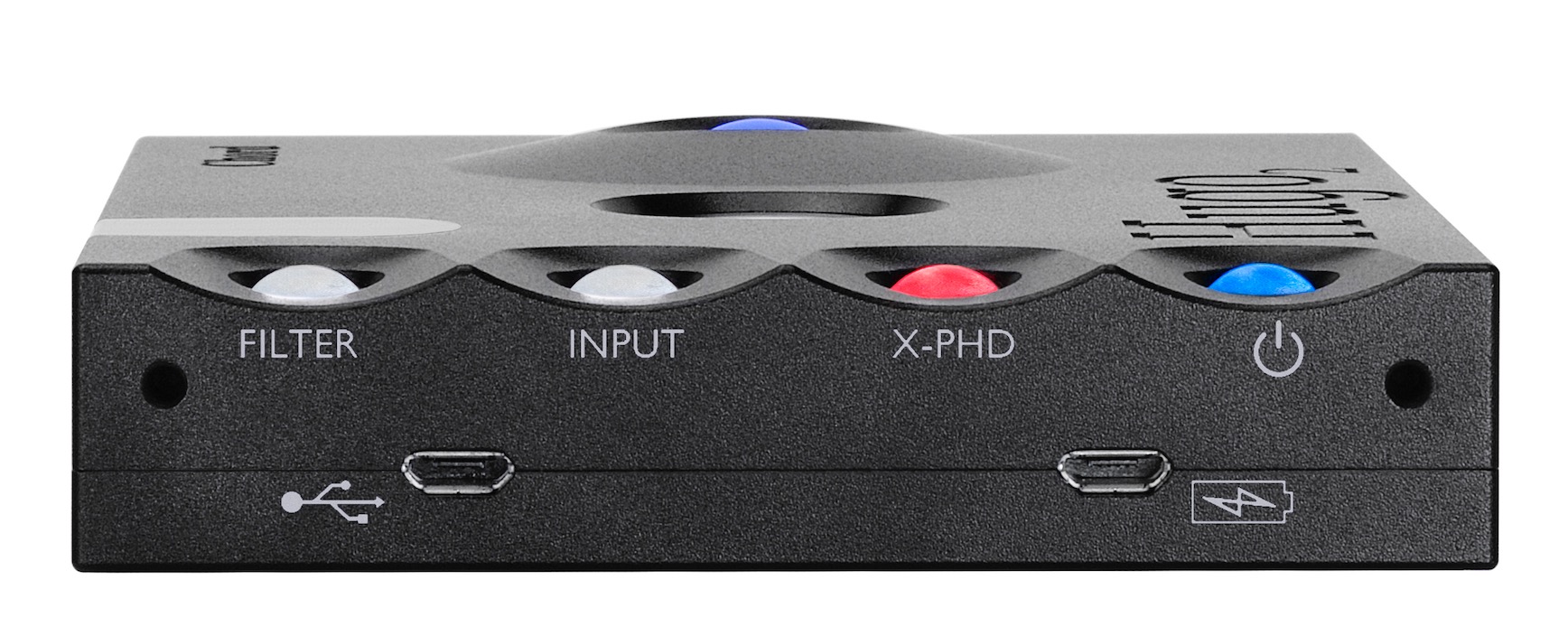
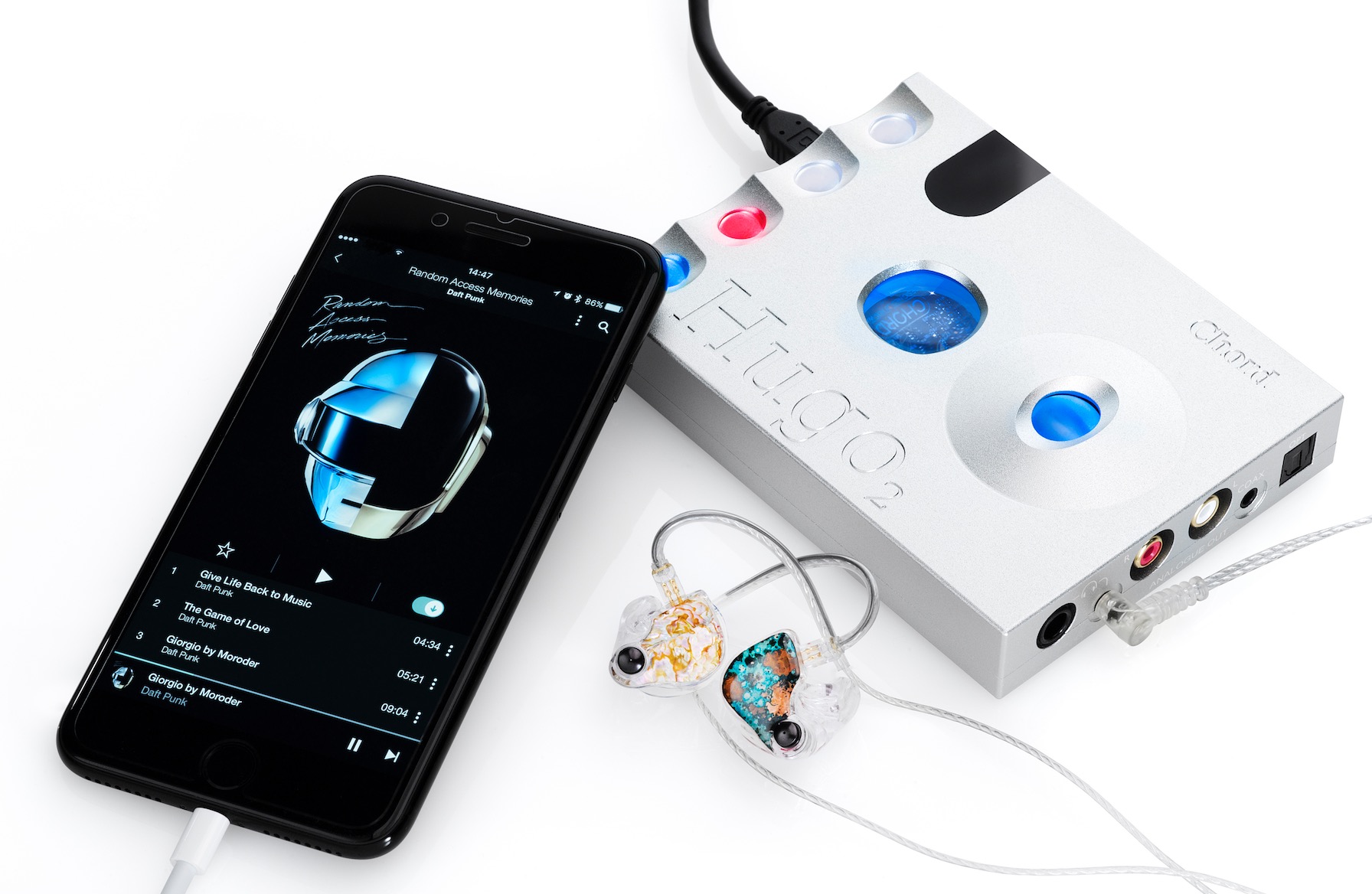
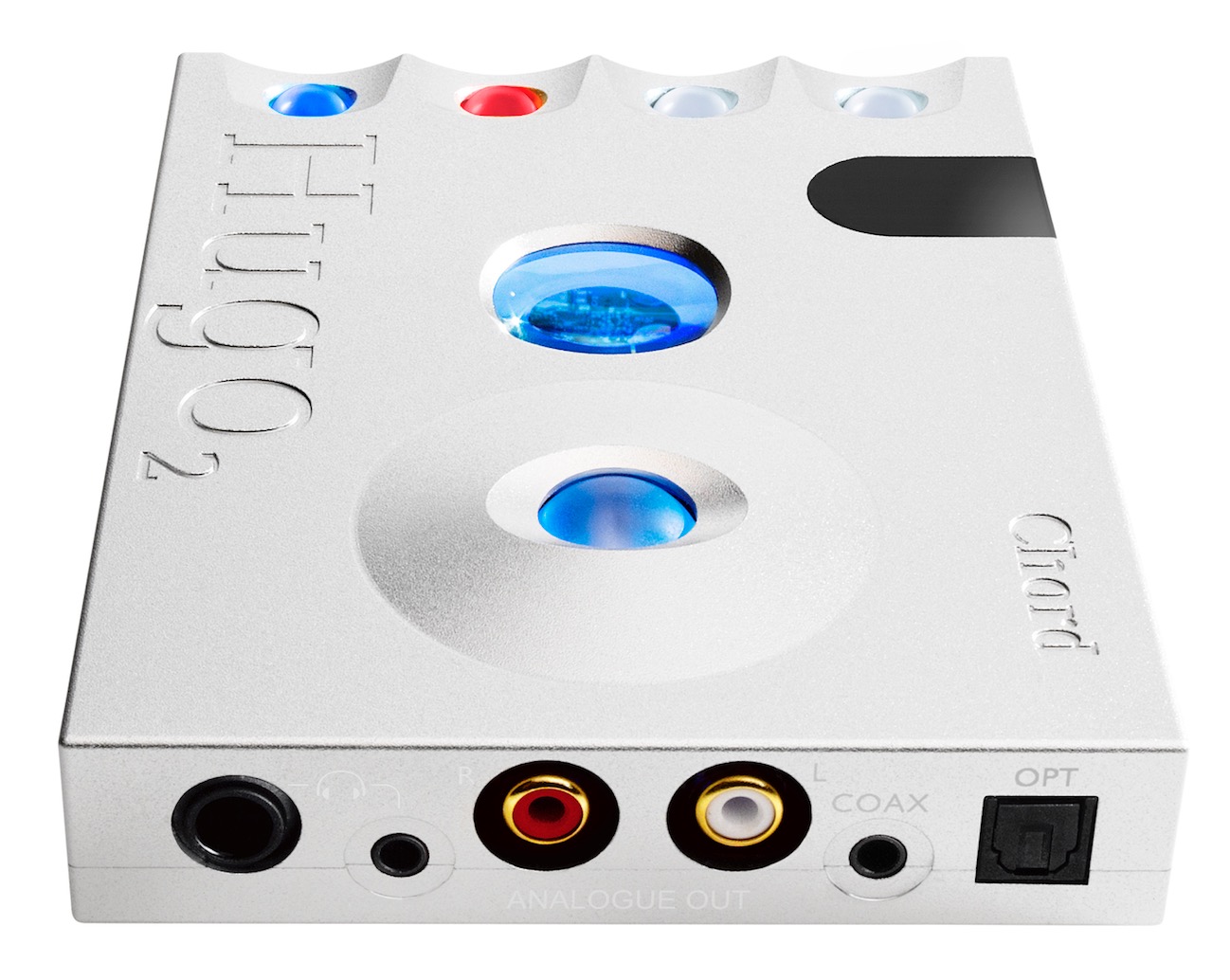
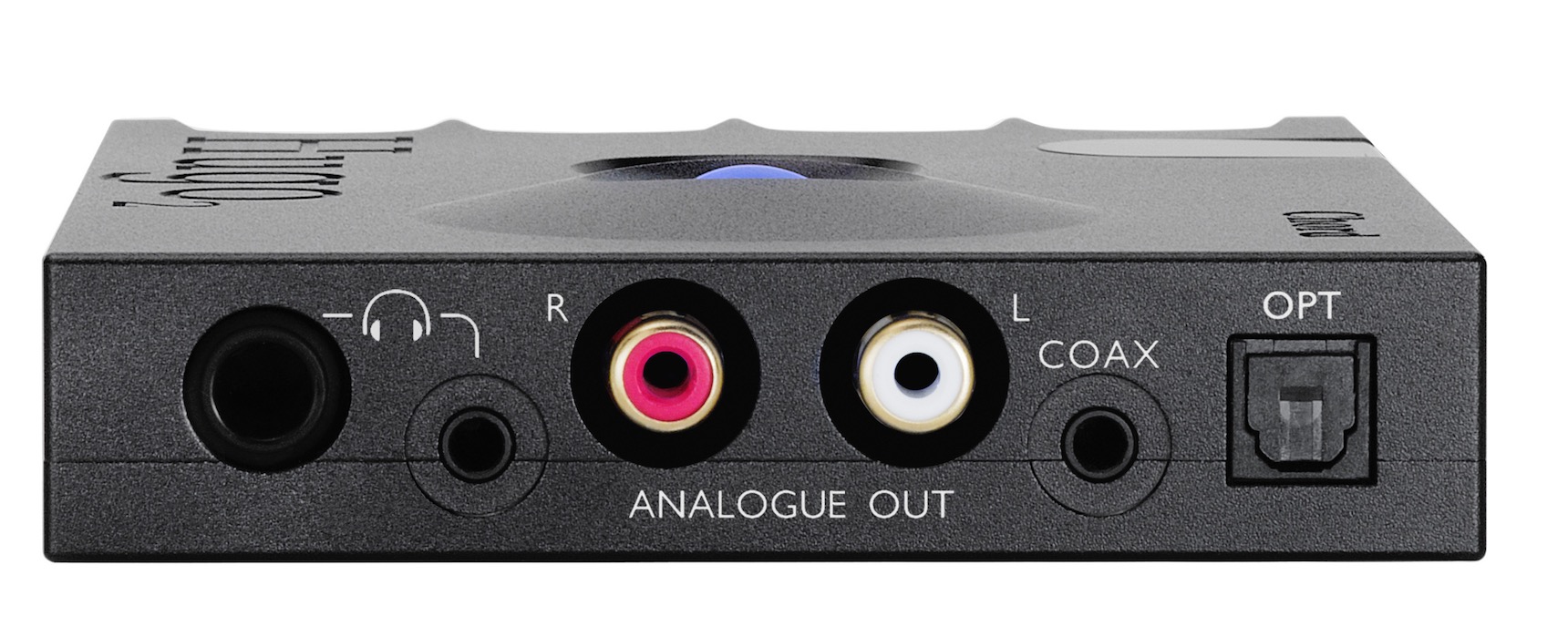
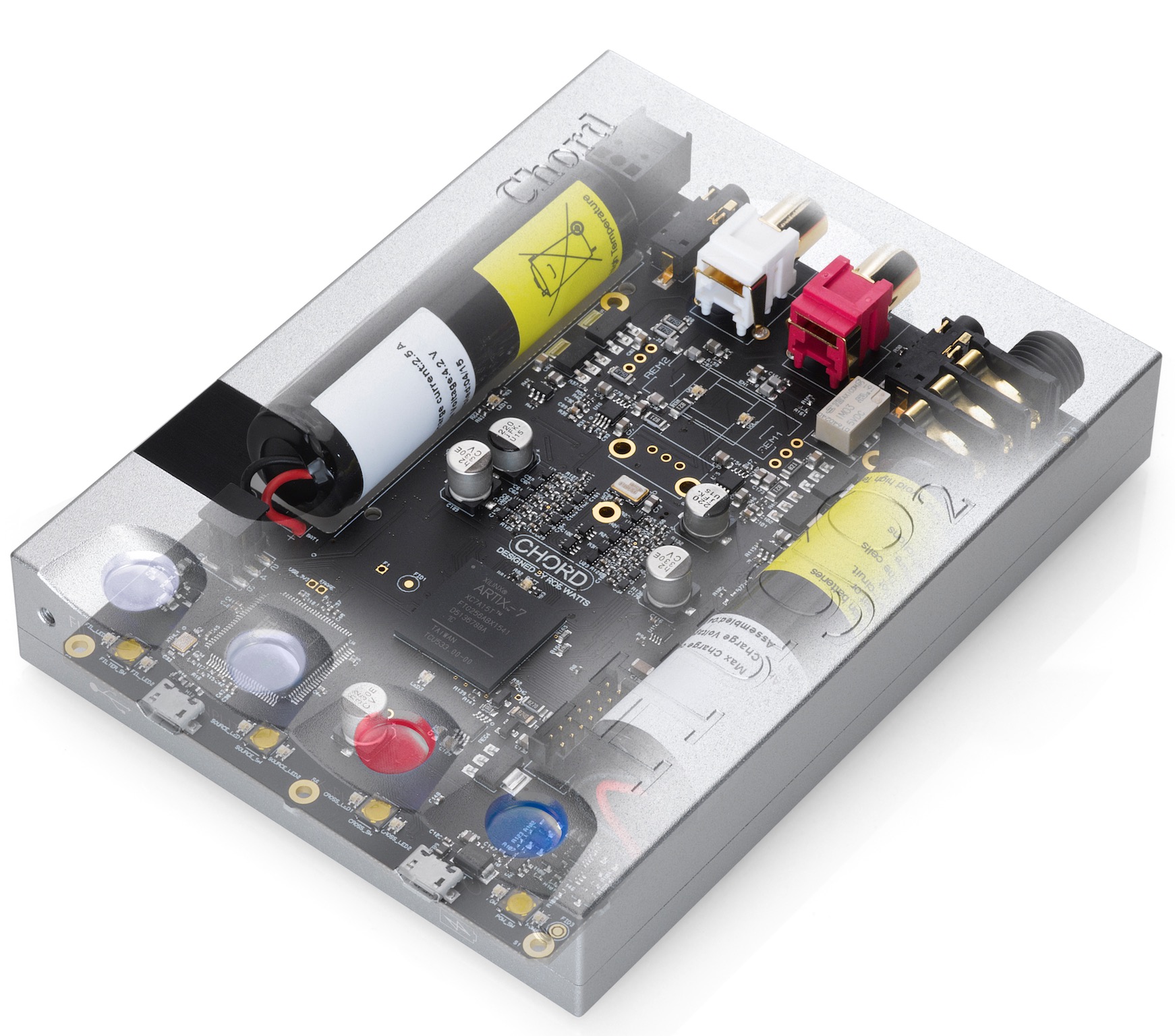
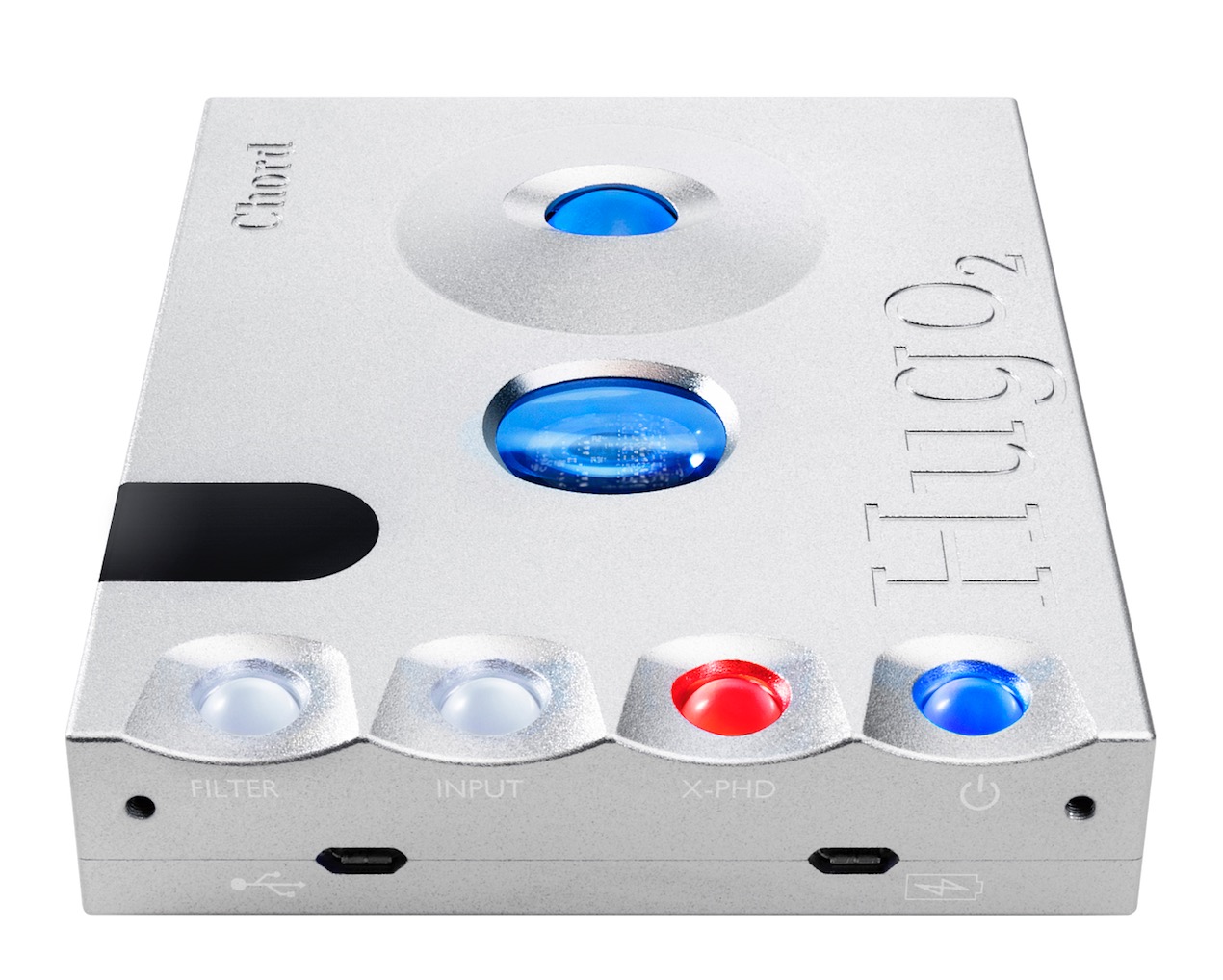
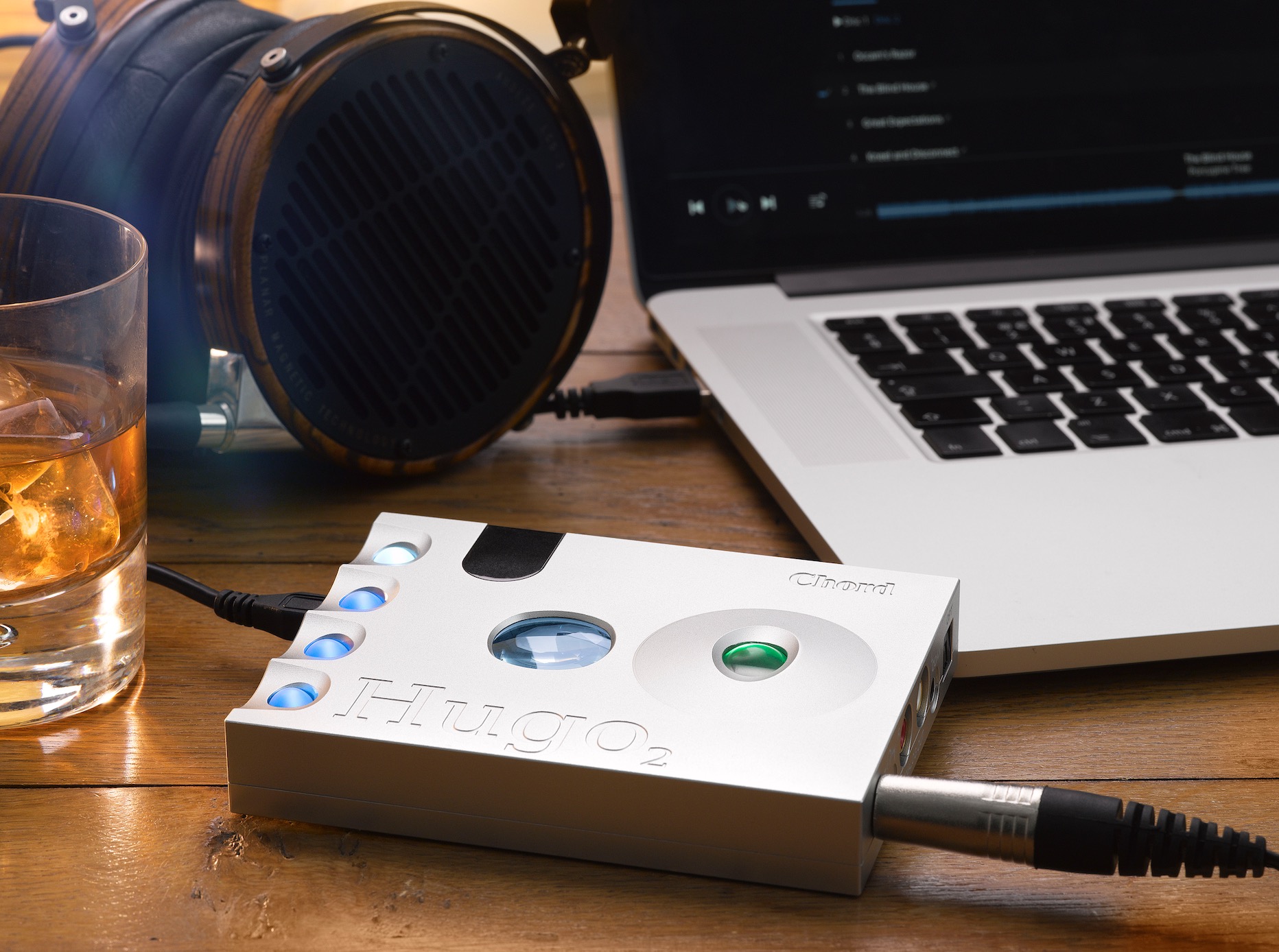
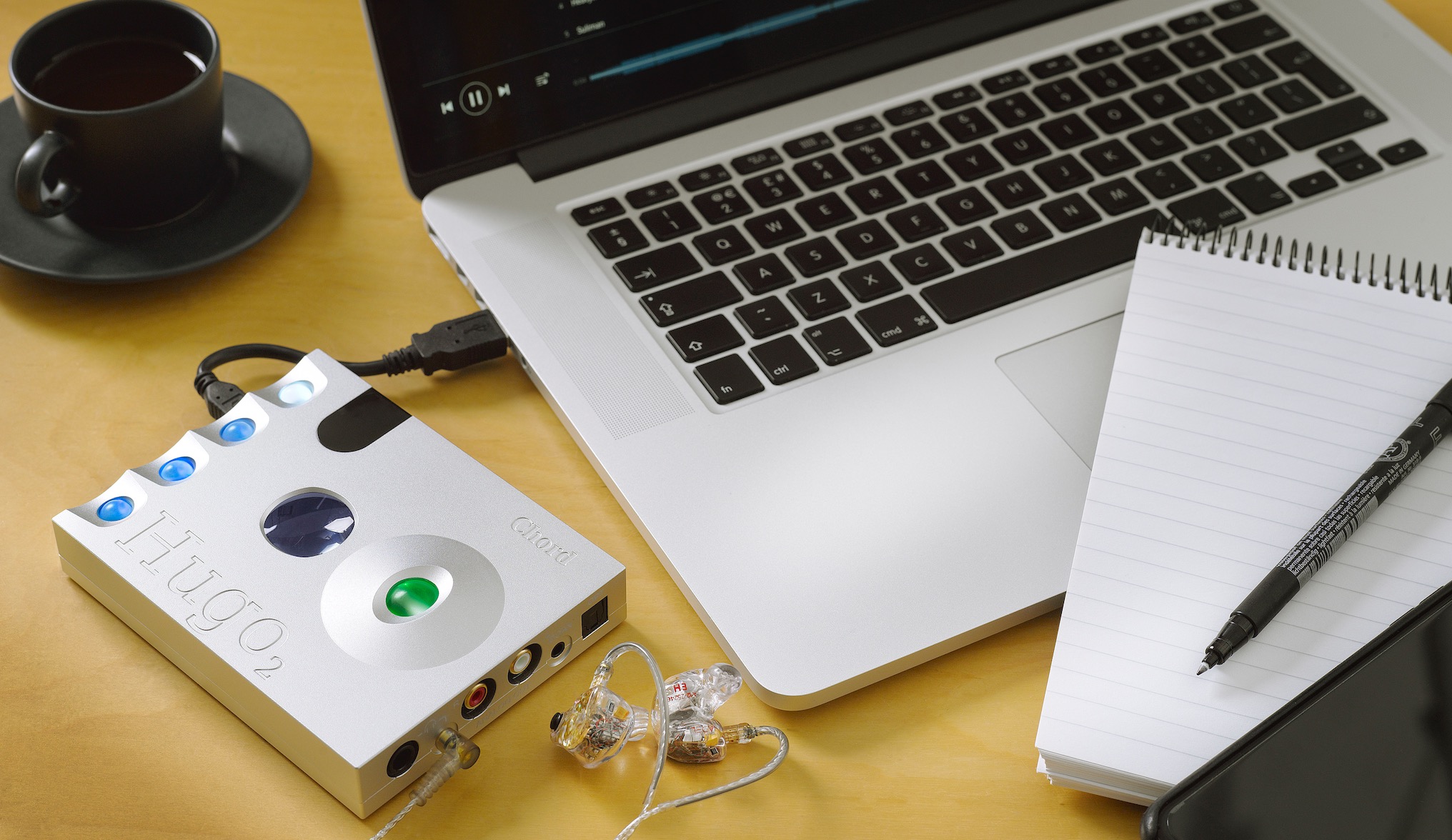
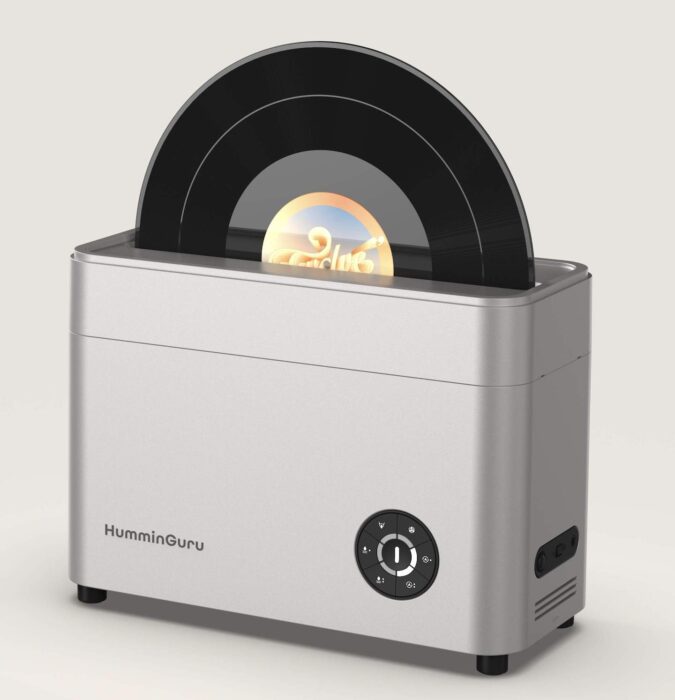
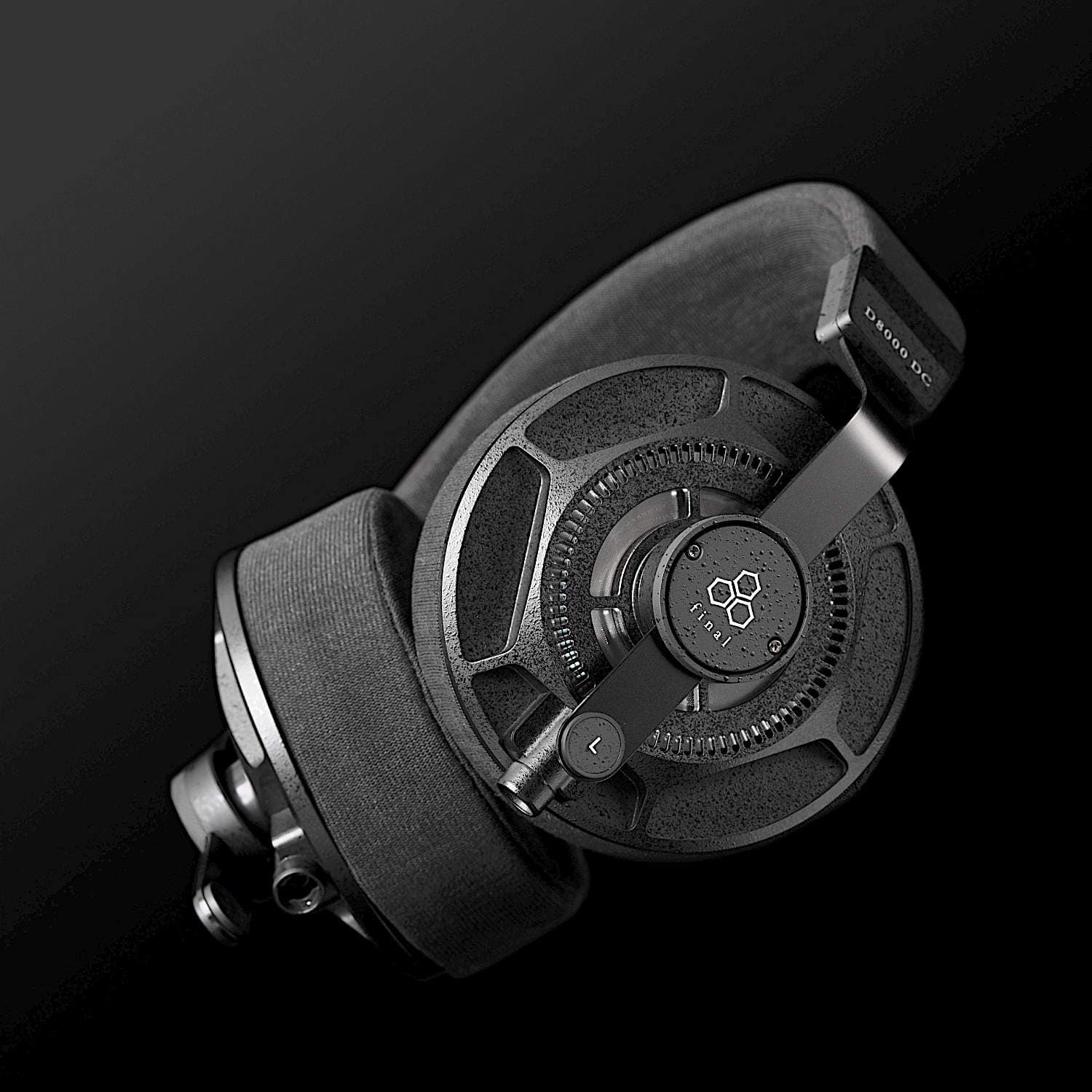
Music-based audio measurements of Hugo 2 are very impressive – http://soundexpert.org/articles/-/blogs/audio-quality-of-high-end-portable-players#hugo2